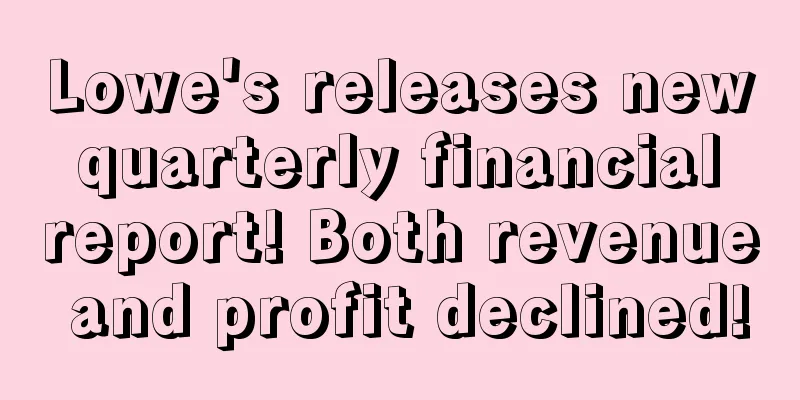In-depth丨Changes in Amazon Review System and Review Trends

|
Amazon's Review system is a very important part. Any changes to the Review system will affect both the Amazon platform and the sellers. Today, I will take you to look at the history of changes in the Review system, and use this trend to analyze the future changes in Review. ◆ ◆ ◆ ◆ The History of Amazon’s Review System When analyzing this historical change, I will approach it from two perspectives: the official and the seller, so that everyone can better understand the Review strategy at the time. Early In the early days of the platform, this period was a critical link in Amazon's wild growth. The official very much hoped that consumers would leave reviews. A large number of product reviews not only made the products on Amazon look popular, but also made the entire platform vibrant, so more traffic would flow into the platform. To achieve this goal, Amazon has come up with various policies for obtaining reviews, and even has a "TOP Reviewer" program that allows official testing. As for the authenticity of these reviews and whether they are manipulated, Amazon turned a blind eye to this issue at a time when it was in urgent need of growth. During this period, fake orders began to rise up, and many sellers took advantage of the growth period when Amazon's review was not strict and carried out fake orders on a large scale. Except for a few sellers who ran into the gun, fake order sellers could make a lot of money at this point. However, at this time, most sellers can place orders as long as they can upload products, and those who consciously fake orders are actually the big guys in the industry. At this time, there are also many sellers who take advantage of the platform's credit period bug to make a profit and run away. In contrast, fake orders are actually considered a "routine operation" for honest sellers. Mid-term During this period, people from all walks of life rushed into Amazon. One after another, the myths of getting rich described Amazon as a treasure trove of gold. At this time, the Amazon platform could already challenge the throne of the world's number one e-commerce platform. Although it has not yet sat firmly, traffic is no longer the most important factor for it. The Matthew effect will make the platform's traffic grow bigger and bigger. At this point in time, Amazon needed to consider how to maintain its business territory and reputation. False reviews are obviously a factor that will seriously affect the life of the platform. This is the first turning point in Amazon's change in attitude towards reviews. Officials began to filter and delete fake reviews through algorithms, and also canceled some programs to obtain reviews, such as "TOP Reviewer". Amazon began to initially rectify fake reviews, and sellers who post fake reviews by machines are the first to be hit because they are too easy to be identified by algorithms. The initial signs may be that a few fake orders were deleted, and some listings were restricted from review. At this time, most sellers are still immersed in the carnival of fake orders. When it is so easy to make orders, who would bother to study advertising keywords? Only a few sharp sellers can smell the danger. Later This period is the past two years. Amazon has firmly established itself as the industry leader, but counterfeit goods and false reviews have become its shortcomings that are criticized, and have also become an obstacle for it to further explore the ceiling of the platform. Therefore, cracking down on counterfeit goods and false reviews has been Amazon's main task during this period. Simply monitoring and deleting fake reviews no longer satisfies Amazon at this time, and the platform has begun to try to fundamentally address the impact of fake reviews. From the perspective of purpose, the purpose of brushing orders is nothing more than to increase sales and thus improve the product ranking, and to make the product look well-reviewed, using high rating stars to attract customers to try to place an order. To achieve this goal, Amazon modified its ranking algorithm so that deeply discounted orders no longer affect rankings. It also added the weight of accounts that leave reviews to the average score algorithm, significantly reducing the impact of suspicious accounts on the average score. The above two important changes have completely made the fake order method ineffective. Combined with the frequent deletion of reviews, fake order sellers have almost disappeared in the past two years. There is no room for fake orders on Amazon anymore. Now, fake orders have no meaning except to deceive novice sellers. ◆ ◆ ◆ ◆ Trends in the Review System in the Future Earlier this year, Amazon added a one-click review feature for buyers, which allows buyers to leave star ratings without adding content. It also recently began testing a "one-click review request" feature for sellers. The purpose of these two functions is very similar, which is to significantly increase the number of real reviews. Combined with the display system changes we mentioned earlier, the display priority of star ratings becomes higher. Amazon's move is to strengthen the importance of star ratings when consumers shop and dilute the impact of fake reviews on the average score by obtaining real review star ratings. In other words, in order to make the average score closer to reality, the weight of reviews will be further strengthened in the future, and the impact of false reviews on products will be further weakened. In the future, it is very likely that a score lost by a real one-star rating will not be able to be brought back even if ten five-star ratings are given. When we add reviews to our products (whether they are tests or requests for reviews), weight will become a factor that we need to pay more and more attention to. In the future, placing 100 low-weight orders may not bring as good an effect as a single high-weight review. Now let’s go back to the topic we talked about before. What is considered a high-weighted review? It’s very simple. In fact, as long as Amazon believes that the buyer’s account is real, the weight will naturally be much higher than those suspicious buyer accounts. As for the detailed factors and operating techniques, they involve many very complicated settings and subtle adjustments, which are not described in detail in this article due to space limitations. Interested students can scan the QR code below to contact me for details. PS. If you want to join the seller discussion group, you can also private message me to let me add you to the group |
<<: Amazon romance is anything but boring
>>: Amazon is about to be split up by the government! Start with this business
Recommend
Big news! Prime Day 2.0 is really here! But sellers’ advertising costs are soaring?
I checked the front desk of Amazon and found that...
Amazon vs. Walmart: Which of the two American e-commerce giants is better?
Recently, ecommerceDB analyzed the two major e-com...
Labor negotiations at US West Coast ports are at a stalemate! Multiple industry associations urge the White House to intervene!
WASHINGTON (Reuters) - The National Retail Federat...
What is the U.S. Consumer Product Safety Commission (CPSC)? U.S. Consumer Product Safety Commission (CPSC) Reviews
The U.S. Consumer Product Safety Commission (CPSC)...
Black Friday Online is over! The first-line battle report is here
“ Net 1 Express: Overall there is a huge explosion...
Shein was accused of having incomplete labor system statements on its official website and forging factory certifications!
<span data-shimo-docs="[[20,"获悉,近日快时尚电商巨头S...
What is Guotong Cross-border? Guotong Cross-border Review
Guotong Cross-border is China's leading one-st...
What is Kuaifang Medicine Delivery? Kuaifang Medicine Delivery Review
Kuaifang Medicine Delivery is a mobile application...
Is drop shipping from independent cross-border e-commerce sites dead in 2022?
In recent years, cross-border e-commerce drop ship...
Online item prices fell 1% in January! US inflation slowed further!
It is learned that Adobe recently released the lat...
Europe is going to give out money again! Will Amazon's commission increase?
Many sellers on the US site should still remember ...
Americans will spend $20.8 billion on Easter 2022! 2022 Easter decoration trends are out!
<span data-shimo-docs="[[20,"获悉,3月1日至9日美国零...
What is MerchantRun? MerchantRun Review
MerchantRun is a fast-growing online retail soluti...
What is Chengshi International Supply Chain Co., Ltd.? Chengshi International Supply Chain Co., Ltd. Review
Chengcheng International Supply Chain Co., Ltd. is...
What is FatWallet.com? FatWallet.com Review
FatWallet.com was first founded by Tim Storm in 19...









